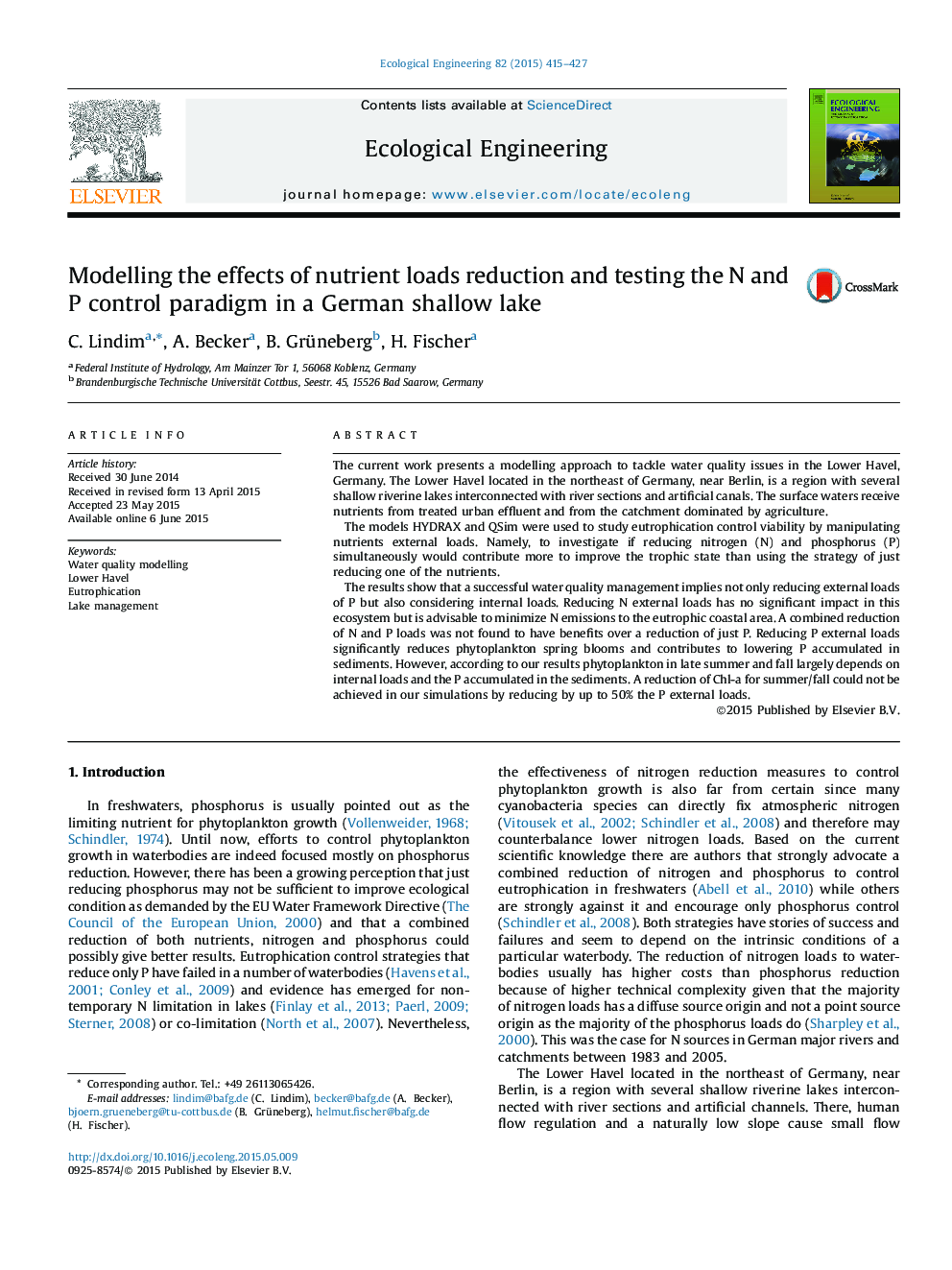| Article ID | Journal | Published Year | Pages | File Type |
|---|---|---|---|---|
| 4388990 | Ecological Engineering | 2015 | 13 Pages |
•We model water quality in the Lower Havel, Germany.•We test if cutting N and P simultaneously is better than cutting one of them.•Reducing P external loads significantly reduces phytoplankton spring blooms.•Phytoplankton in summer/ fall depends on internal loads and P sediments pool.•Reducing N external loads has no impact but cuts N reaching the coastal area.
The current work presents a modelling approach to tackle water quality issues in the Lower Havel, Germany. The Lower Havel located in the northeast of Germany, near Berlin, is a region with several shallow riverine lakes interconnected with river sections and artificial canals. The surface waters receive nutrients from treated urban effluent and from the catchment dominated by agriculture.The models HYDRAX and QSim were used to study eutrophication control viability by manipulating nutrients external loads. Namely, to investigate if reducing nitrogen (N) and phosphorus (P) simultaneously would contribute more to improve the trophic state than using the strategy of just reducing one of the nutrients.The results show that a successful water quality management implies not only reducing external loads of P but also considering internal loads. Reducing N external loads has no significant impact in this ecosystem but is advisable to minimize N emissions to the eutrophic coastal area. A combined reduction of N and P loads was not found to have benefits over a reduction of just P. Reducing P external loads significantly reduces phytoplankton spring blooms and contributes to lowering P accumulated in sediments. However, according to our results phytoplankton in late summer and fall largely depends on internal loads and the P accumulated in the sediments. A reduction of Chl-a for summer/fall could not be achieved in our simulations by reducing by up to 50% the P external loads.
